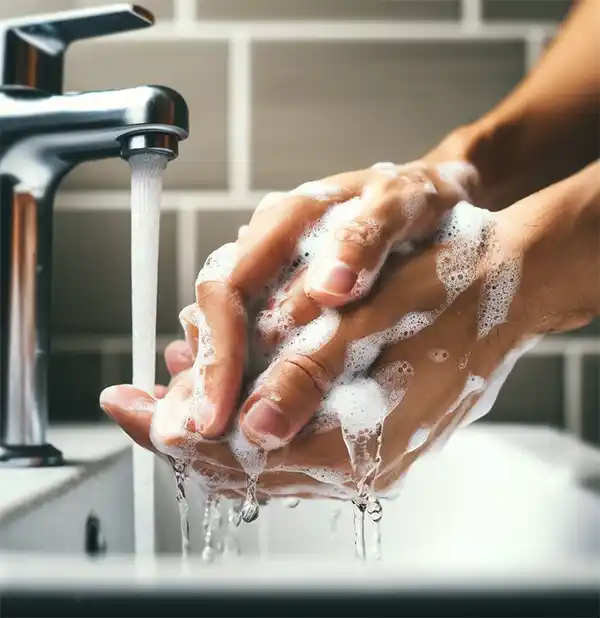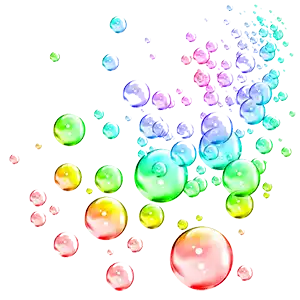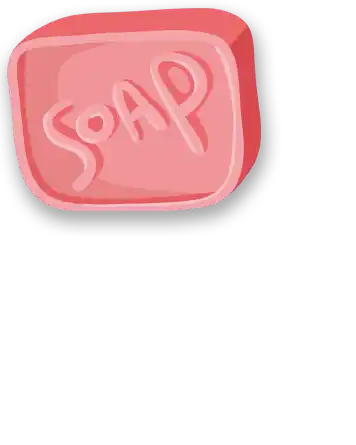Lather, Rinse, Repeat—And Save the World
Every October 15th, we gather to celebrate something that’s surprisingly heroic, yet often taken for granted: handwashing. That’s right, Global Handwashing Day is not just about keeping your hands squeaky clean, it’s about saving lives one scrub at a time. You might think soap and water are just the sidekicks in your daily routine, but they’re actually the dynamic duo fighting off the real villains—germs.
Why Handwashing Matters
You might think handwashing is just one of those things your parents drilled into you, like saying "please" and "thank you." But handwashing is actually one of the most important and simple ways to protect your health and the health of others. Each time you wash your hands properly, you’re breaking the chain of infection—like pulling the plug on a germ party before it can even start. The Centers for Disease Control and Prevention (CDC) notes that many illnesses, from the common cold to more serious infections like pneumonia, are spread through contaminated hands.
Imagine this: you touch a doorknob, someone sneezes nearby, or you pet your dog (who’s probably been rolling around in questionable things outside). Those germs happily hitch a ride on your hands, just waiting for a chance to make their move. And before you know it, you’ve touched your face or handled food, giving those germs an all-access pass to your body. Handwashing stops them in their tracks. It’s not just about being clean—it’s about being a first line of defense in a world where microscopic troublemakers are everywhere.
A Clean Revolution
Believe it or not, the idea of washing your hands to prevent illness is relatively modern. In the mid-19th century, a Hungarian doctor named Ignaz Semmelweis figured out that doctors could dramatically reduce infections simply by washing their hands between treating patients. This was revolutionary at the time—though sadly, Semmelweis wasn’t exactly celebrated for his discovery (let’s just say, people were really into their dirty hands back then).
 It wasn’t until the germ theory of disease took off in the late 1800s, thanks to scientists like Louis Pasteur, that handwashing became more widespread. Over the years, campaigns have been launched to promote the simple yet powerful habit of washing your hands, particularly in healthcare settings. Now, we’ve even got a global day to celebrate it—and rightfully so!
It wasn’t until the germ theory of disease took off in the late 1800s, thanks to scientists like Louis Pasteur, that handwashing became more widespread. Over the years, campaigns have been launched to promote the simple yet powerful habit of washing your hands, particularly in healthcare settings. Now, we’ve even got a global day to celebrate it—and rightfully so!
How to Wash Your Hands Like a Pro (Spoiler: It’s Not Just a Quick Rinse)
You’ve probably been washing your hands since you were a kid, but are you doing it right? Let’s break it down to make sure your technique is worthy of Global Handwashing Day.
-
Wet your hands: Start with clean, running water (warm or cold, whatever floats your boat), and get those hands nice and wet.
-
Apply soap: No skimping here—lather up with enough soap to cover all surfaces of your hands.
-
Scrub for at least 20 seconds: This is the part where many of us get lazy. You’ve got to put in the time! Scrub the backs of your hands, between your fingers, and under your nails. If you need a timer, sing the "Happy Birthday" song twice (or, if you’re feeling fancy, hum the chorus of your favorite song).
-
Rinse: Thoroughly rinse your hands under clean, running water to wash away all the soap and germs.
-
Dry: Use a clean towel or air dry. Wet hands are like a welcome mat for germs, so make sure you dry them completely.
Bonus points if you follow this up with some hand sanitizer when soap and water aren’t available—but nothing beats a good old-fashioned handwash.
Let’s Set the Record Straight
Let’s clear up a few common misconceptions about handwashing before we head into the comedy club of germs.
-
Myth #1: "Hand sanitizer is just as good as soap and water."
Not exactly. While hand sanitizer is great in a pinch, it doesn’t eliminate all types of germs (especially not the grime you pick up from, say, handling raw chicken). Soap and water are still your best bet.
-
Myth #2: "I only need to wash my hands when they look dirty."
Germs don’t carry banners announcing their presence. Even if your hands look clean, they can still be crawling with bacteria and viruses that don’t need to RSVP to your immune system’s party.
-
Myth #3: "A quick rinse is enough."
Rinsing with just water doesn’t do much to remove those invisible bad guys. You need the soap to break down oils and dirt, trapping the germs and sending them on their merry way down the drain.
Fun Handwashing Facts You Didn’t Know You Needed
-
Handwashing has Olympic-level importance: During the 2012 London Olympics, handwashing stations were placed all over the Olympic Village to help athletes avoid infections. Because nothing says “gold medal” like clean hands.
-
The 20-second scrub: That 20-second rule isn’t just for kicks. Studies have shown that washing your hands for 20 seconds removes far more germs than a quick splash and dash. Time to brush up on your "Happy Birthday" game.
-
Handwashing in space: Even astronauts wash their hands! Since running water isn’t exactly available in space, they use a special no-rinse soap and a towel to keep their hands clean on the International Space Station. Outer space may be dirty, but their hands sure aren’t.
How to Celebrate
We know it might not seem like the most glamorous holiday, but celebrating Global Handwashing Day can be more fun than you think. Here’s how you can get in on the handwashing action:
-
Get your scrub on: Set a good example by washing your hands frequently and showing others the proper technique. Bonus points if you film yourself scrubbing and share it online with the hashtag #GlobalHandwashingDay. Who knows, you might just start the next viral (but in a good way) trend.
-
Teach the little ones: Kids often treat handwashing like a speed race. Make it fun by turning it into a game—maybe they can be "Germ Busters," or you can make up a handwashing song they’ll love. If you’ve got time, a puppet show wouldn’t hurt either.
-
Stock up on the good stuff: Treat yourself to some fancy soap that smells like lavender fields or citrus groves. After all, handwashing should be an enjoyable experience.
-
Hand out some hygiene gifts: Send care packages with soap, hand sanitizer, and information about proper handwashing techniques to schools, community centers, or friends and family. You’ll be spreading cleanliness, not germs.
 Handwashing is one of the easiest and most effective ways to prevent the spread of disease. It doesn’t require special equipment or hours of training—just soap, water, and a little effort. On Global Handwashing Day, take a moment to appreciate the power of clean hands and spread the message (not the germs) to everyone around you.
Handwashing is one of the easiest and most effective ways to prevent the spread of disease. It doesn’t require special equipment or hours of training—just soap, water, and a little effort. On Global Handwashing Day, take a moment to appreciate the power of clean hands and spread the message (not the germs) to everyone around you.
And remember, the next time you lather up, you’re not just cleaning your hands—you’re doing your part to protect yourself and others. Now go forth and scrub with pride—you’re practically a handwashing hero!
Please Share our Content






 It wasn’t until the germ theory of disease took off in the late 1800s, thanks to scientists like Louis Pasteur, that handwashing became more widespread. Over the years, campaigns have been launched to promote the simple yet powerful habit of washing your hands, particularly in healthcare settings. Now, we’ve even got a global day to celebrate it—and rightfully so!
It wasn’t until the germ theory of disease took off in the late 1800s, thanks to scientists like Louis Pasteur, that handwashing became more widespread. Over the years, campaigns have been launched to promote the simple yet powerful habit of washing your hands, particularly in healthcare settings. Now, we’ve even got a global day to celebrate it—and rightfully so! Handwashing is one of the easiest and most effective ways to prevent the spread of disease. It doesn’t require special equipment or hours of training—just soap, water, and a little effort. On Global Handwashing Day, take a moment to appreciate the power of clean hands and spread the message (not the germs) to everyone around you.
Handwashing is one of the easiest and most effective ways to prevent the spread of disease. It doesn’t require special equipment or hours of training—just soap, water, and a little effort. On Global Handwashing Day, take a moment to appreciate the power of clean hands and spread the message (not the germs) to everyone around you.








 "Sláinte!" is a traditional Irish expression used as a toast, equivalent to "Cheers!" in English.
"Sláinte!" is a traditional Irish expression used as a toast, equivalent to "Cheers!" in English.